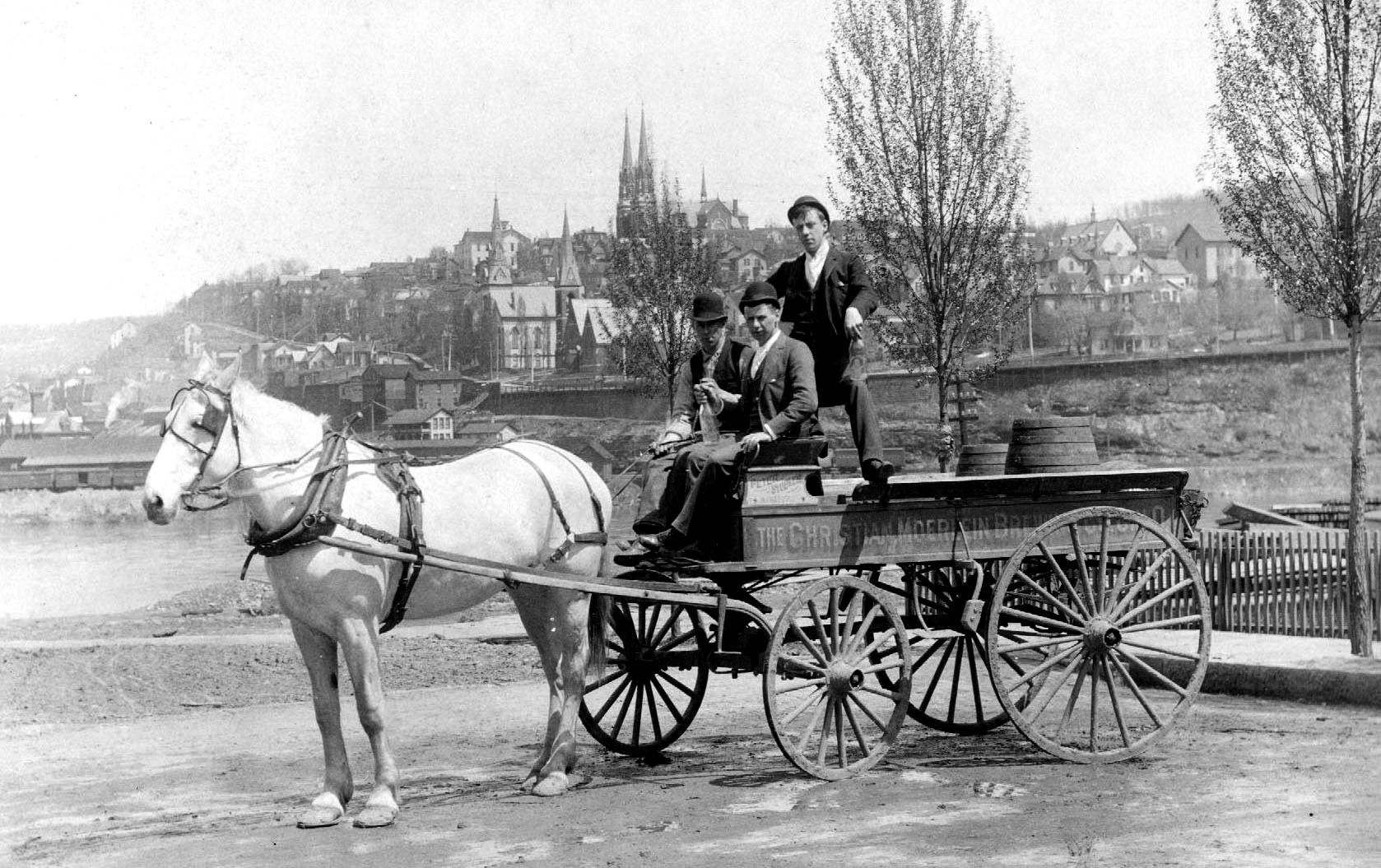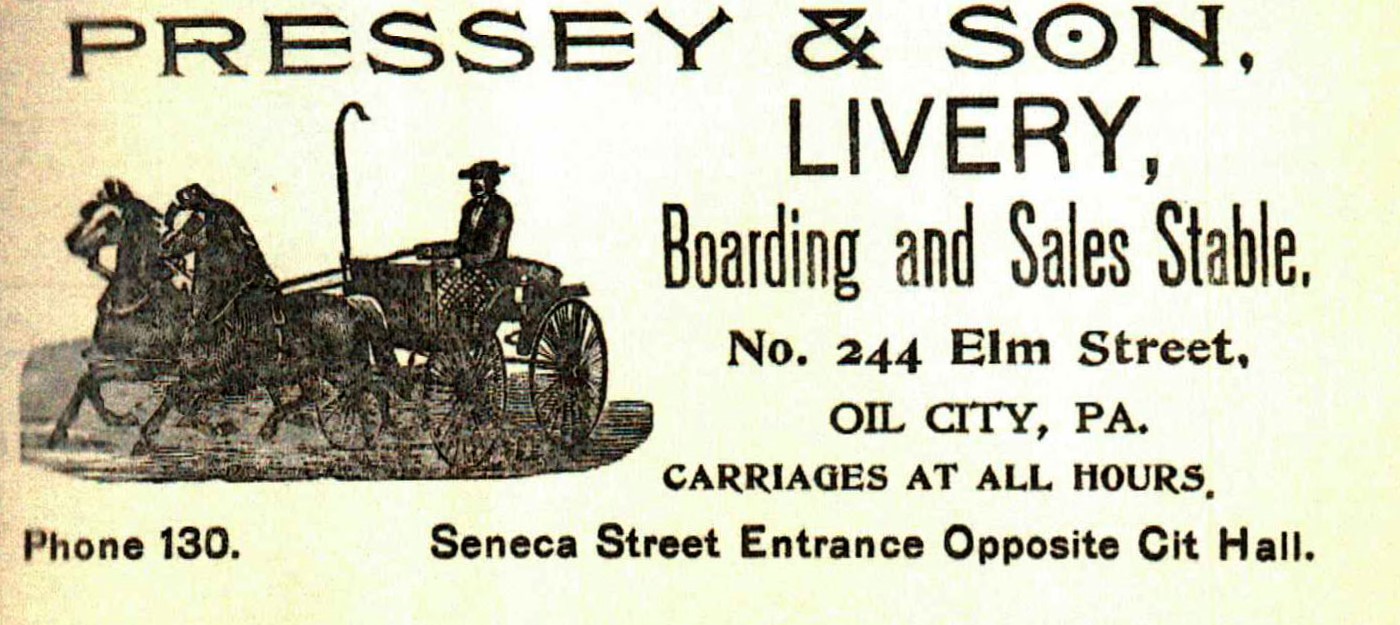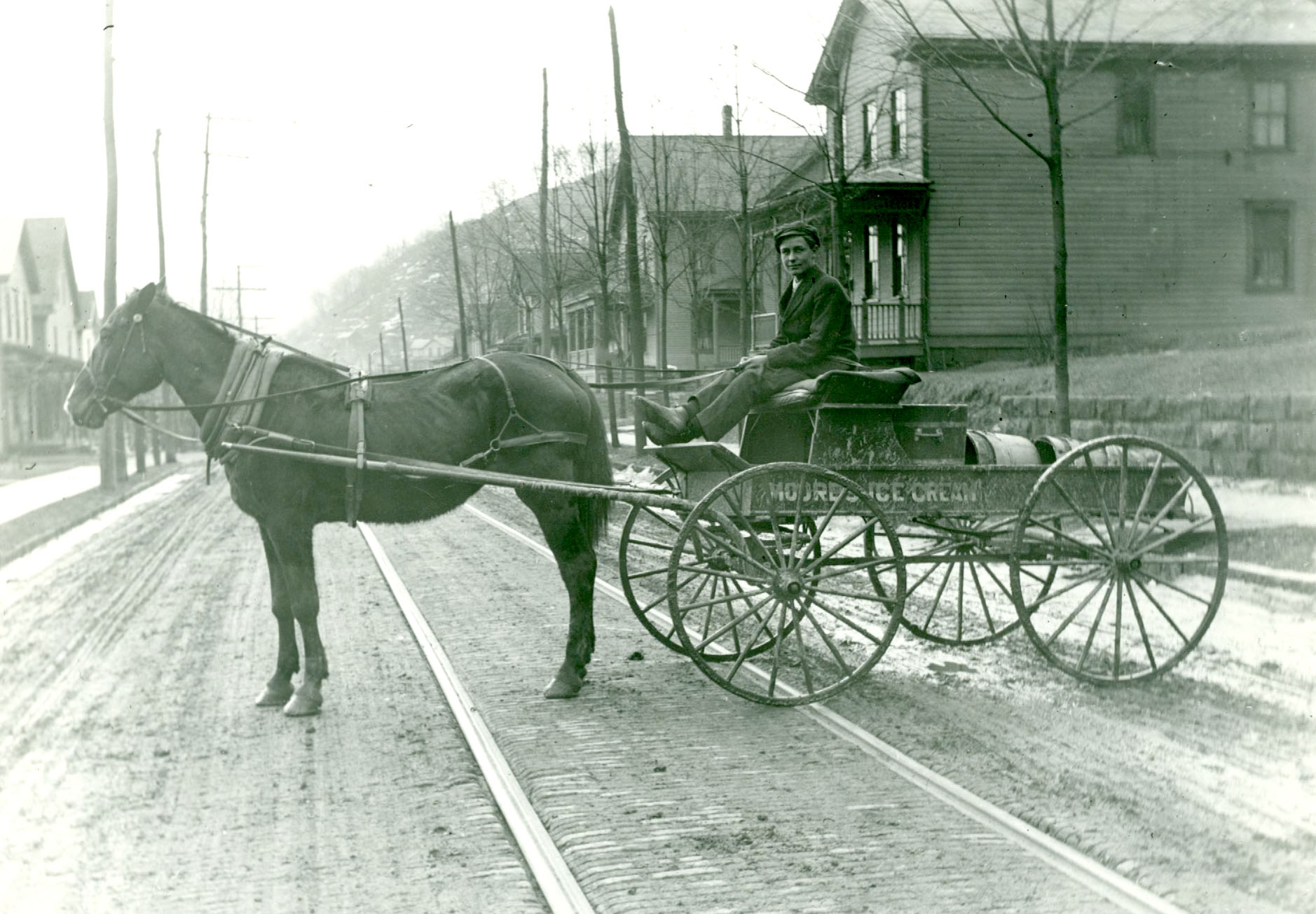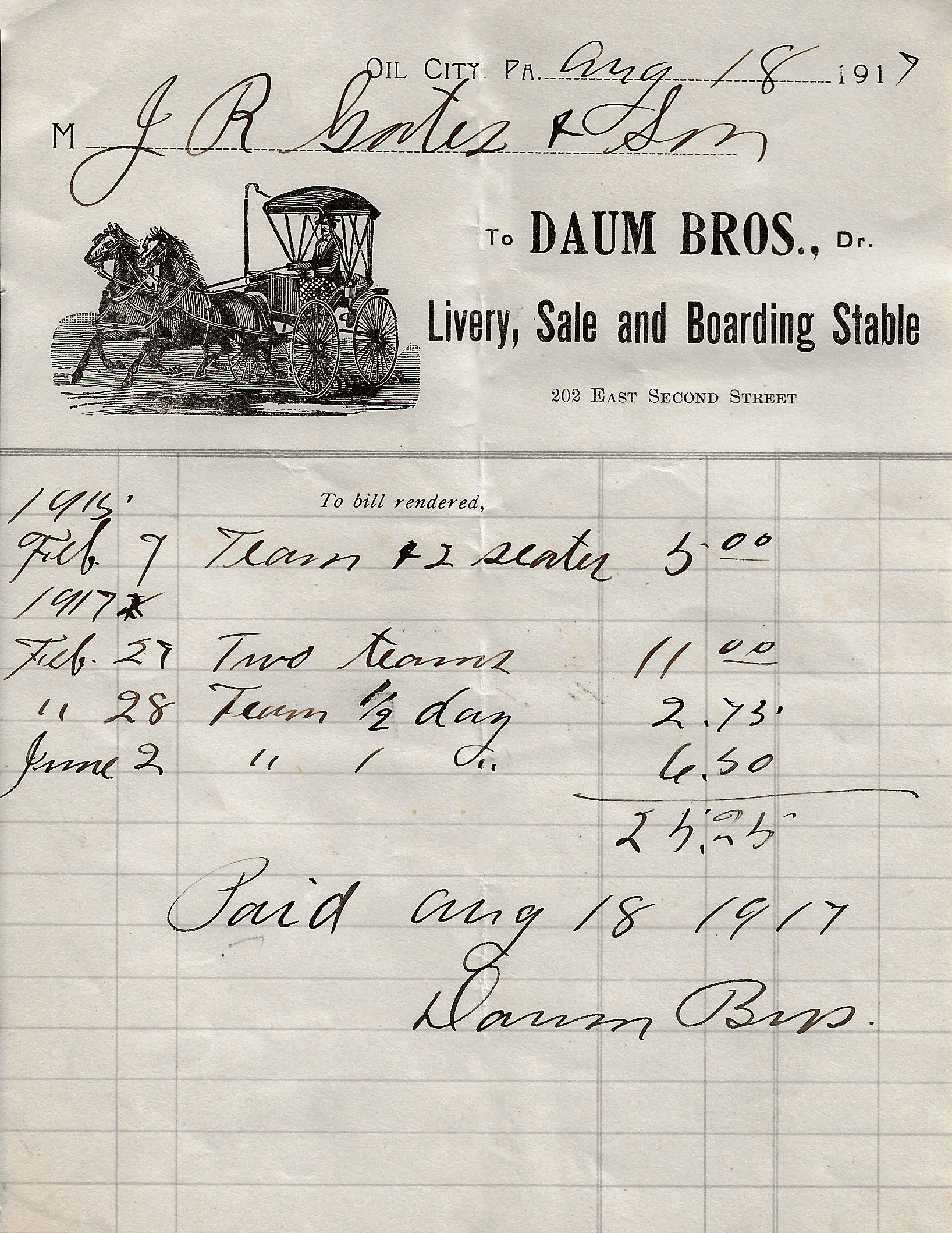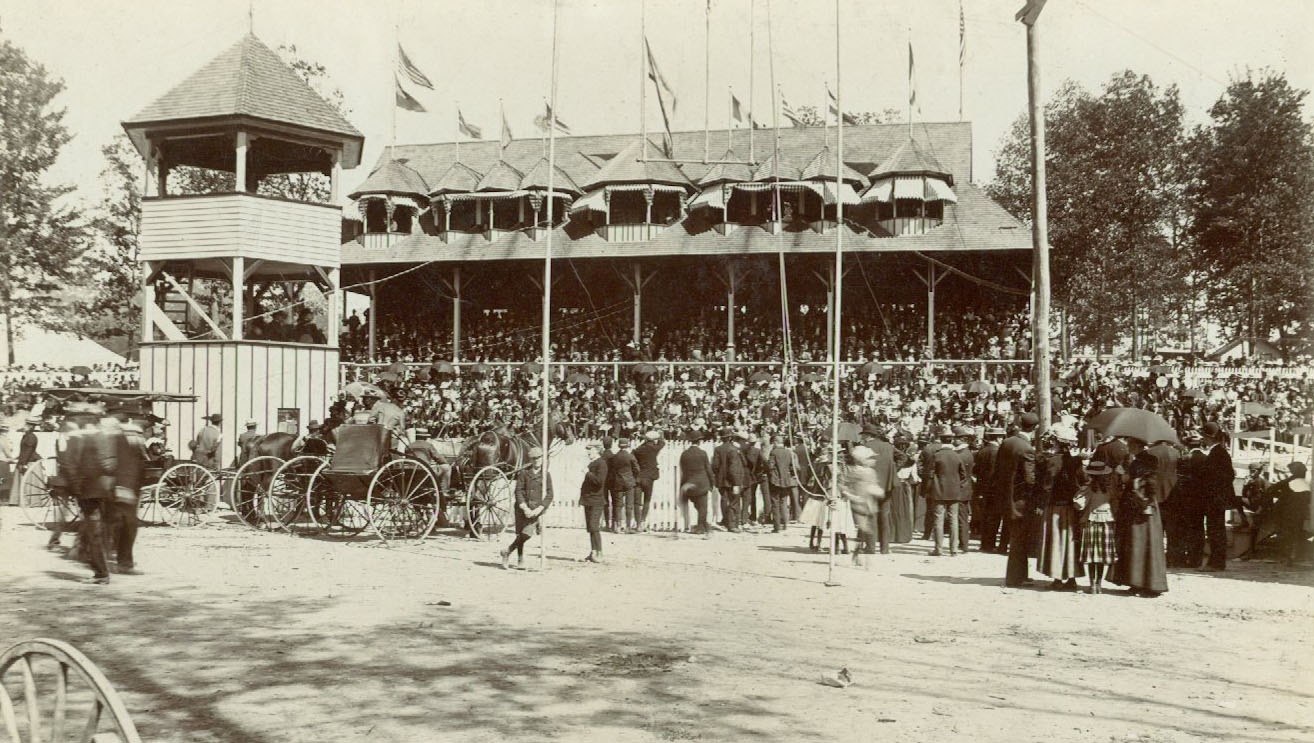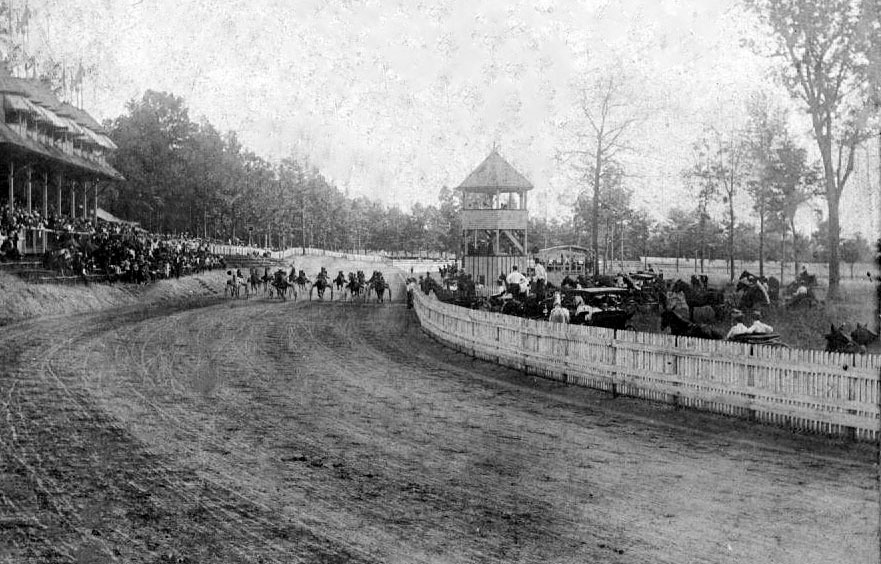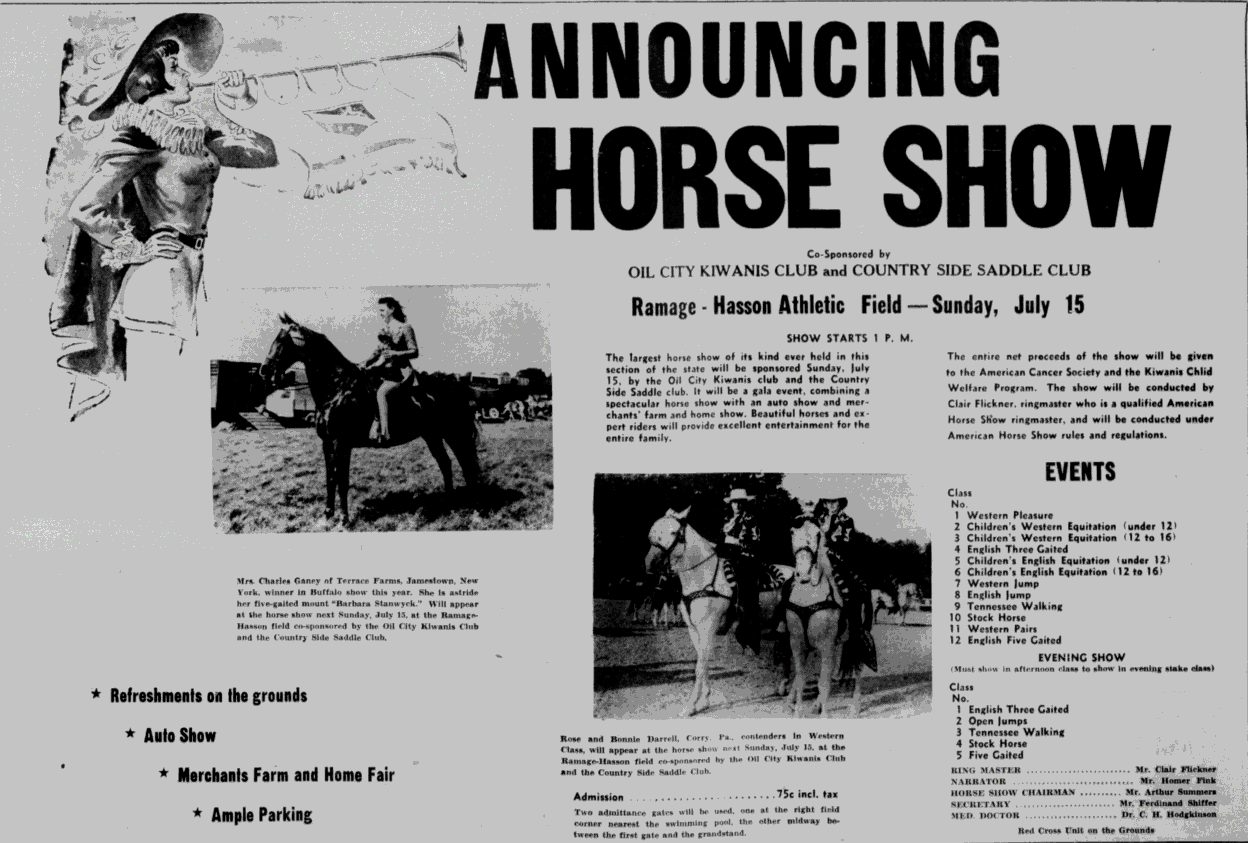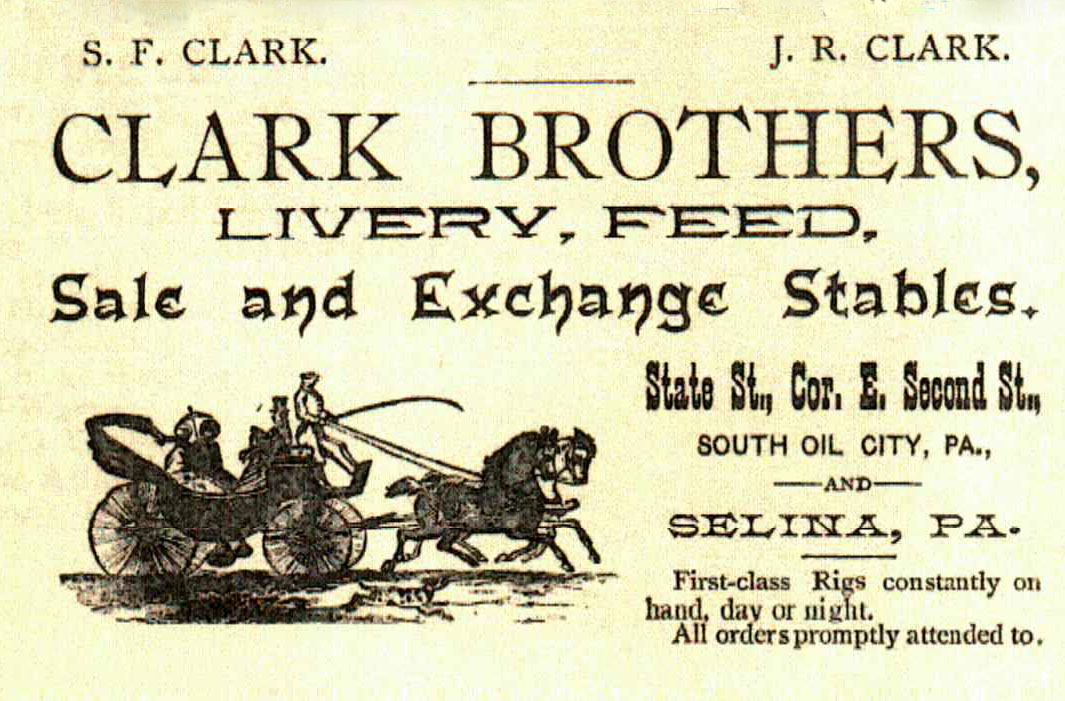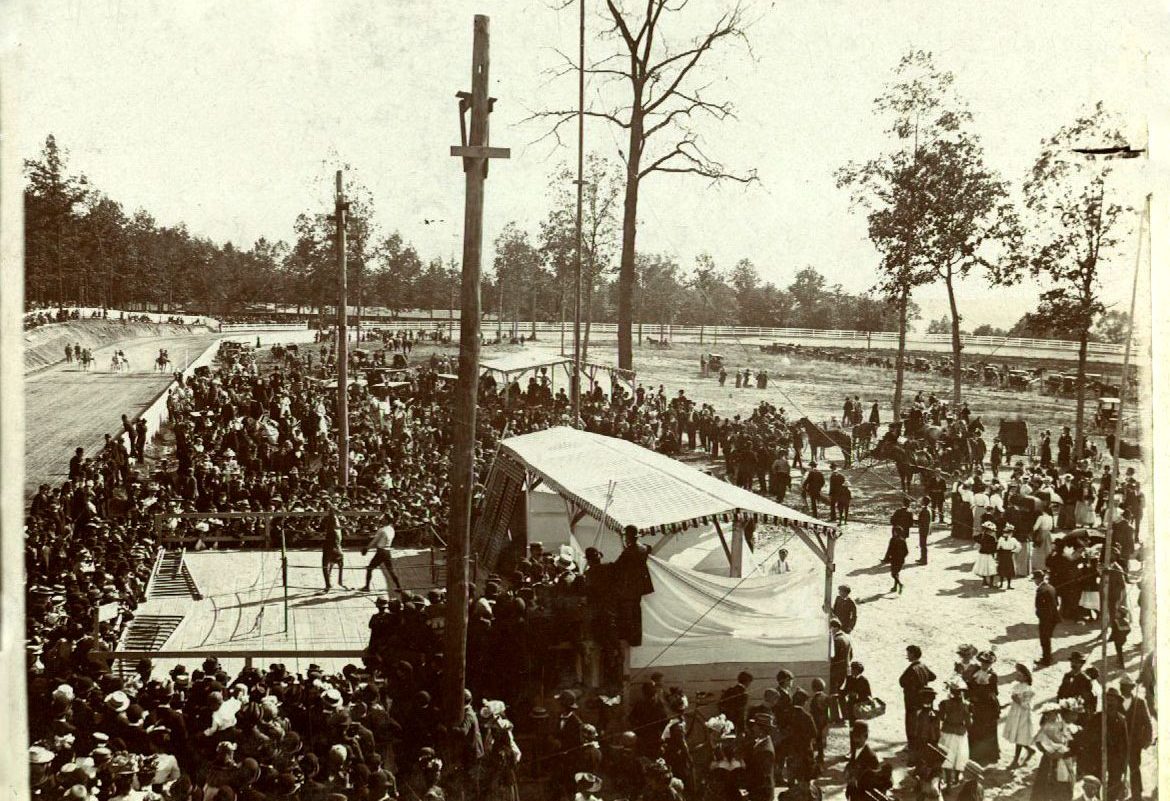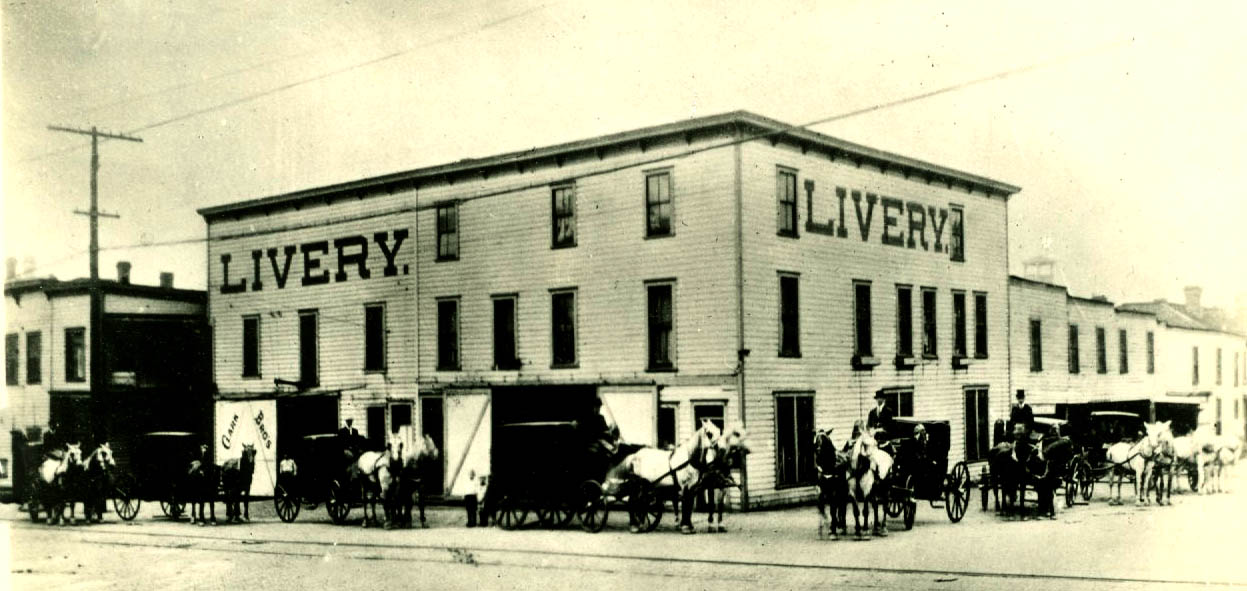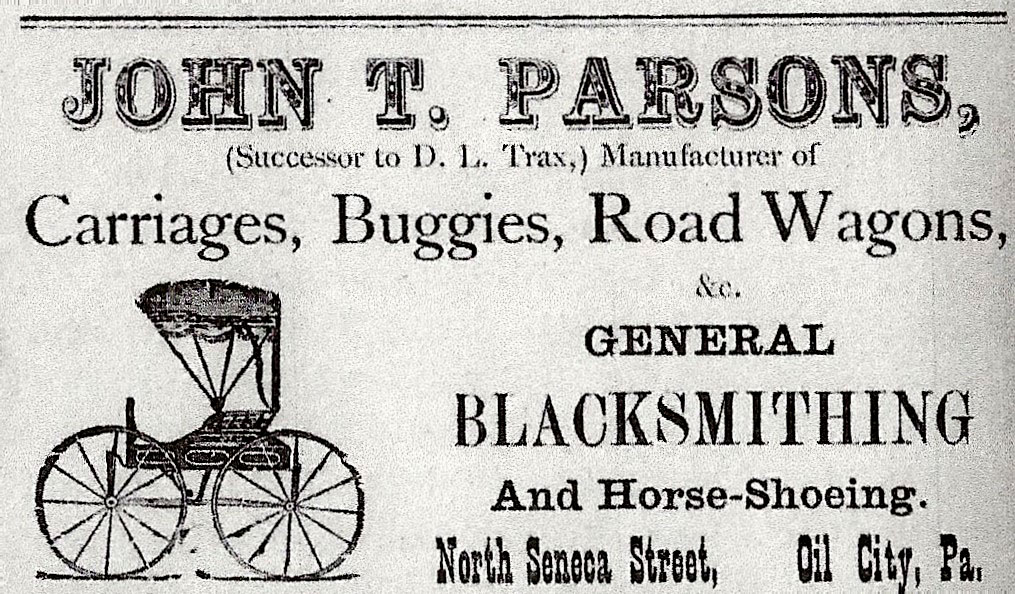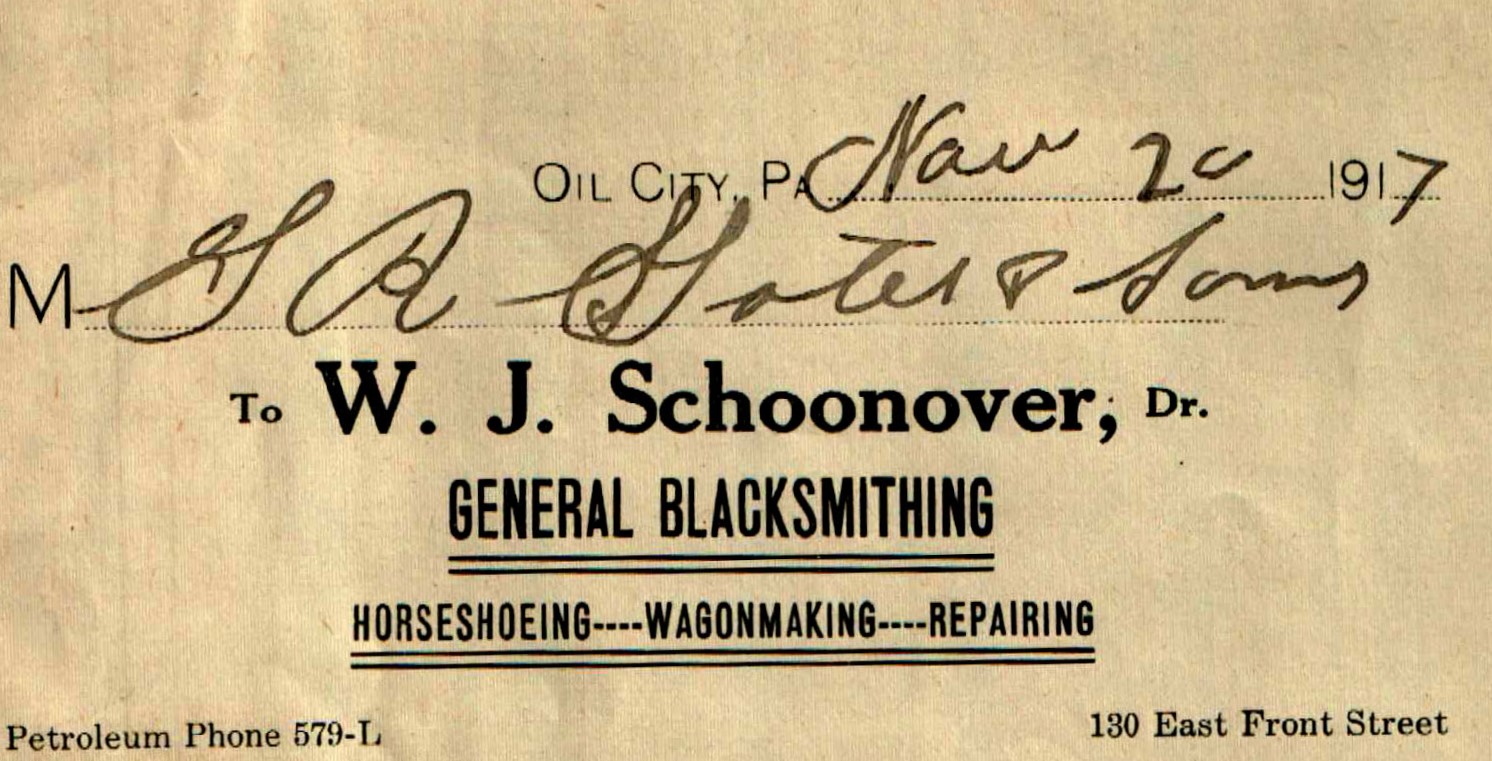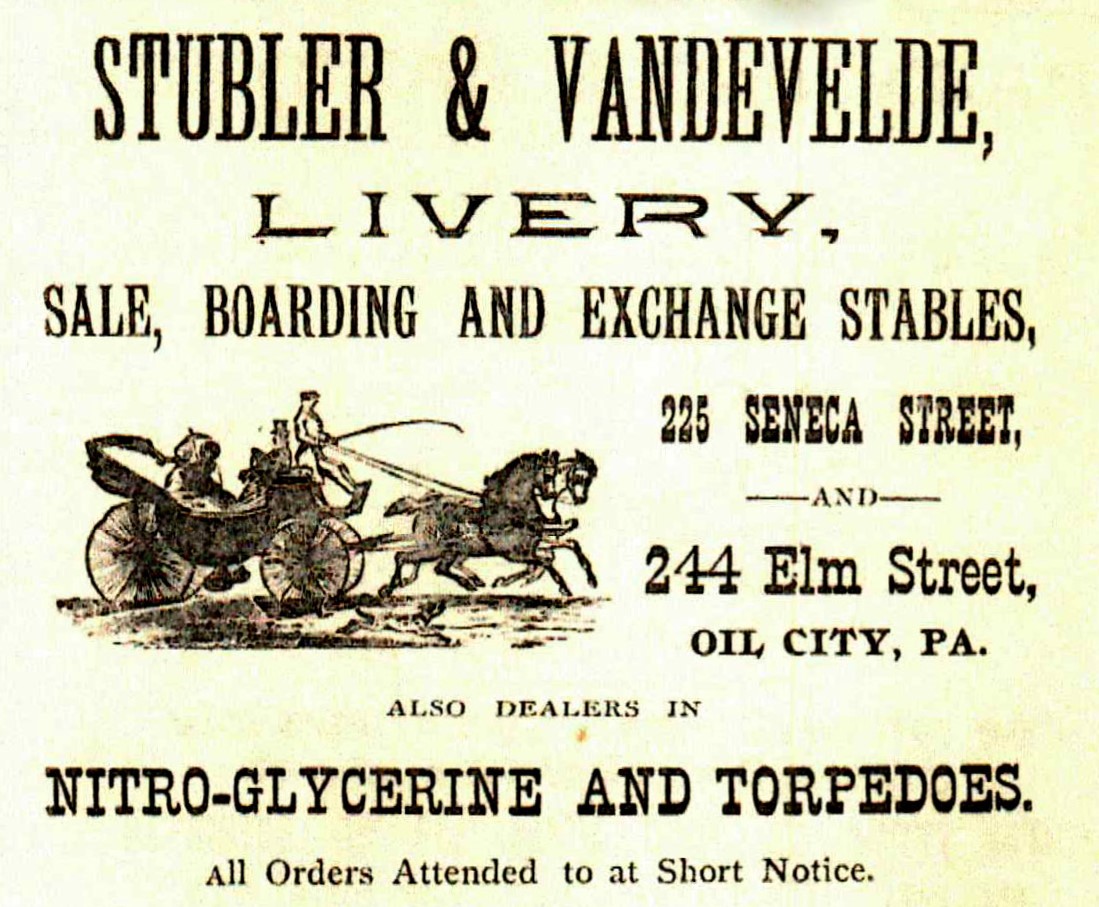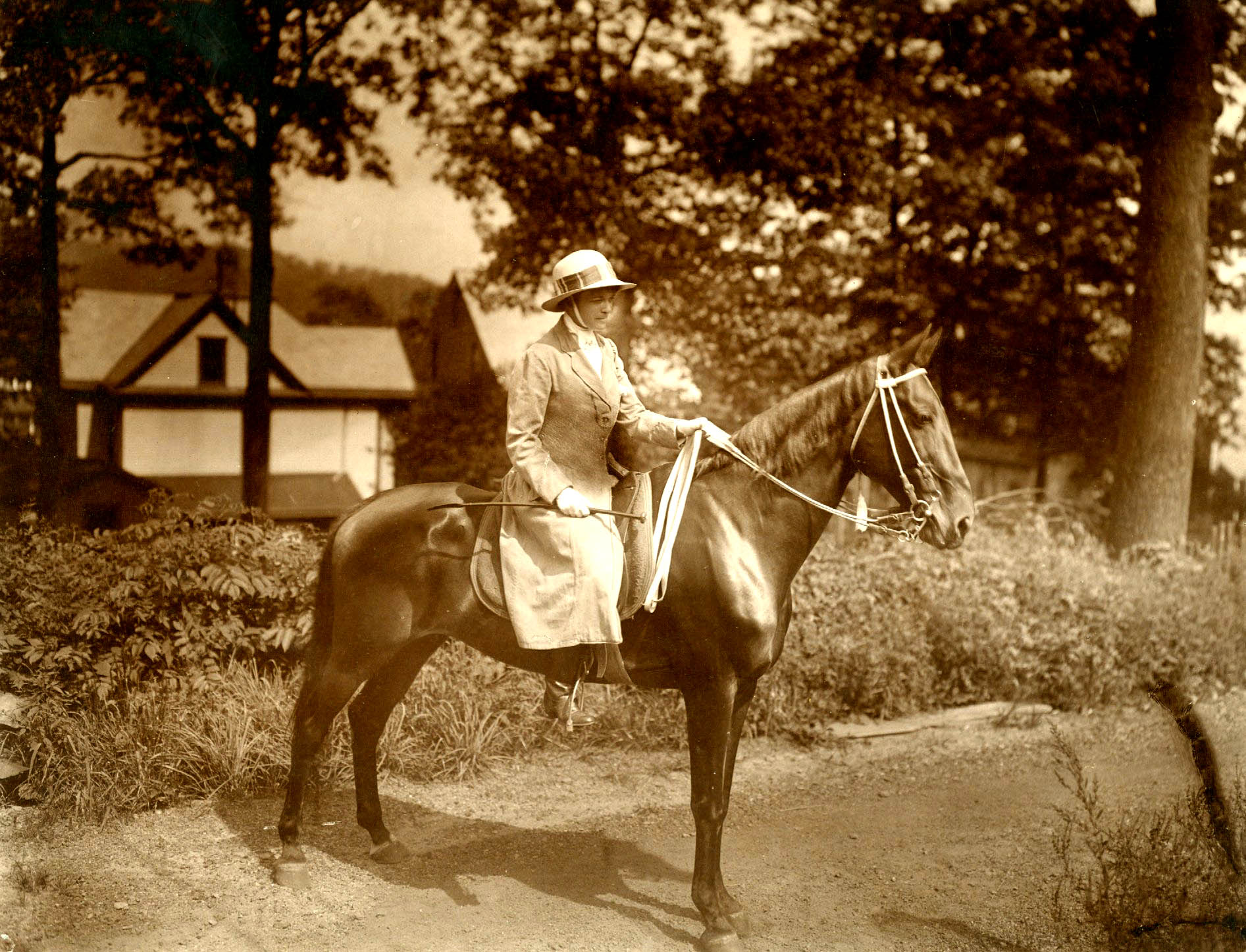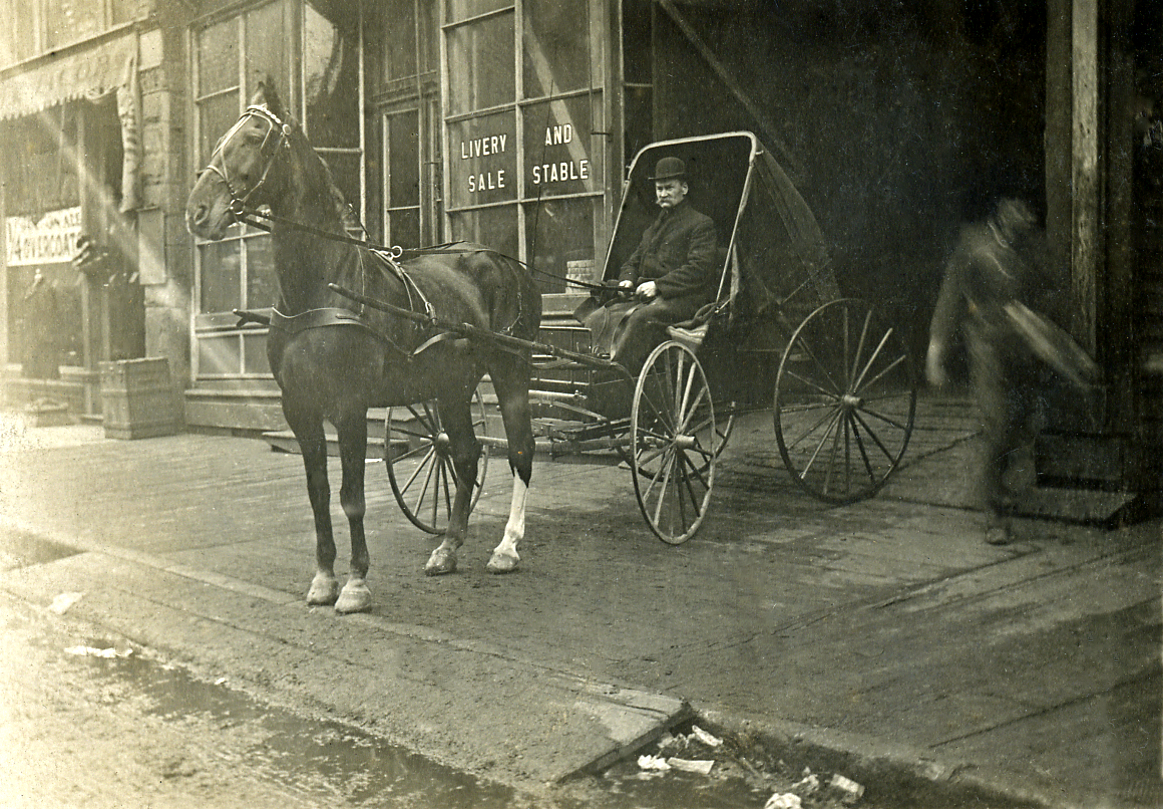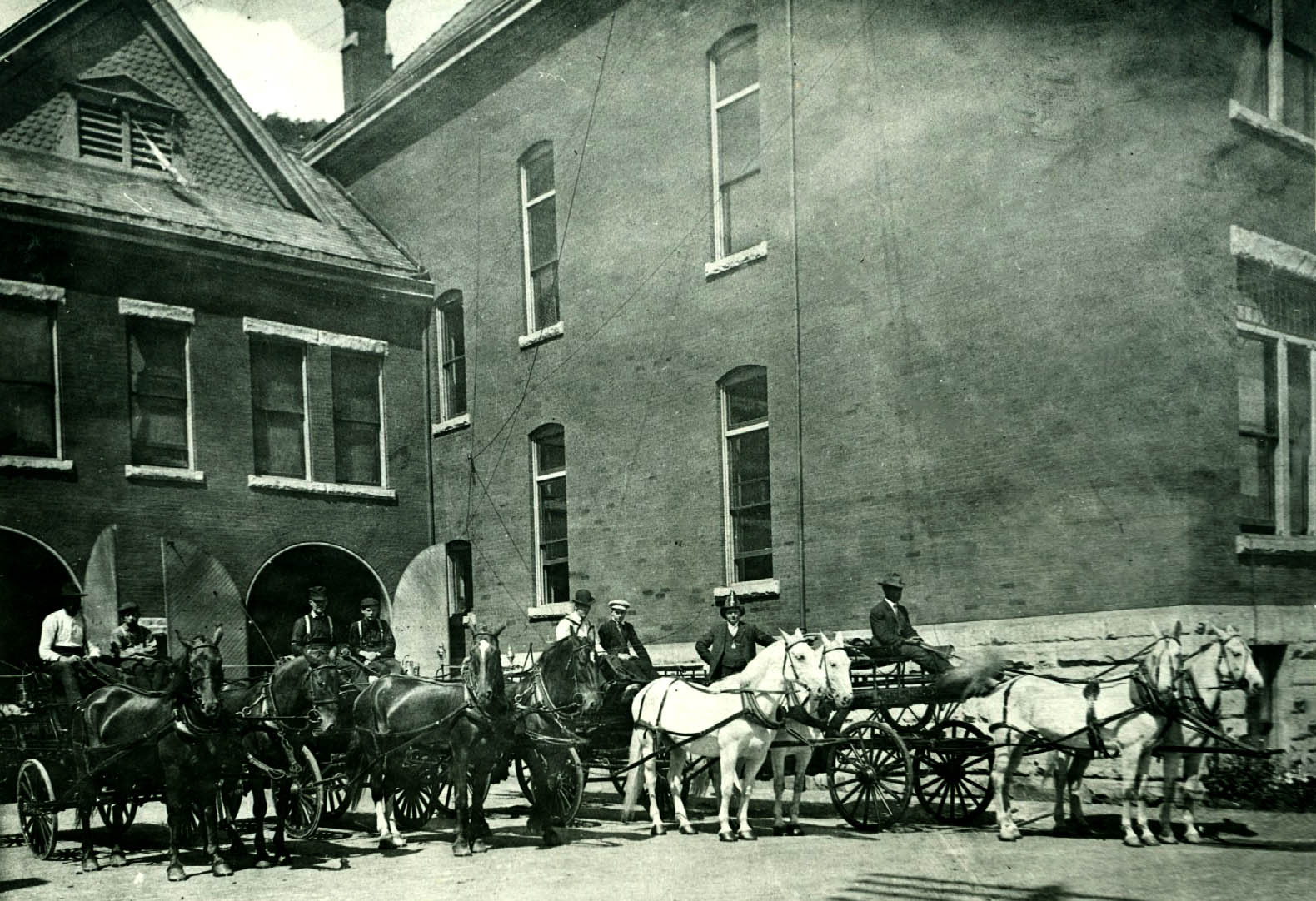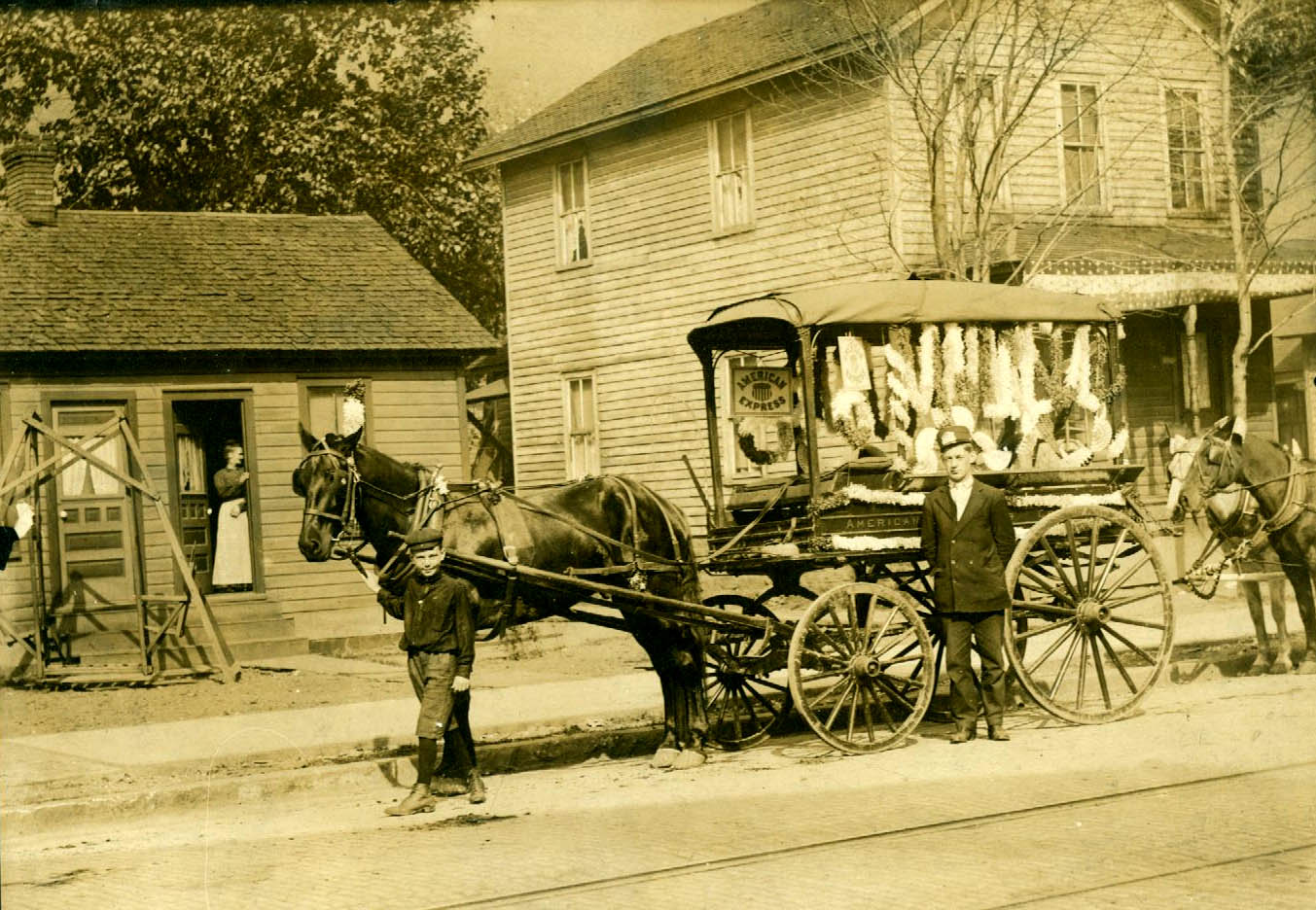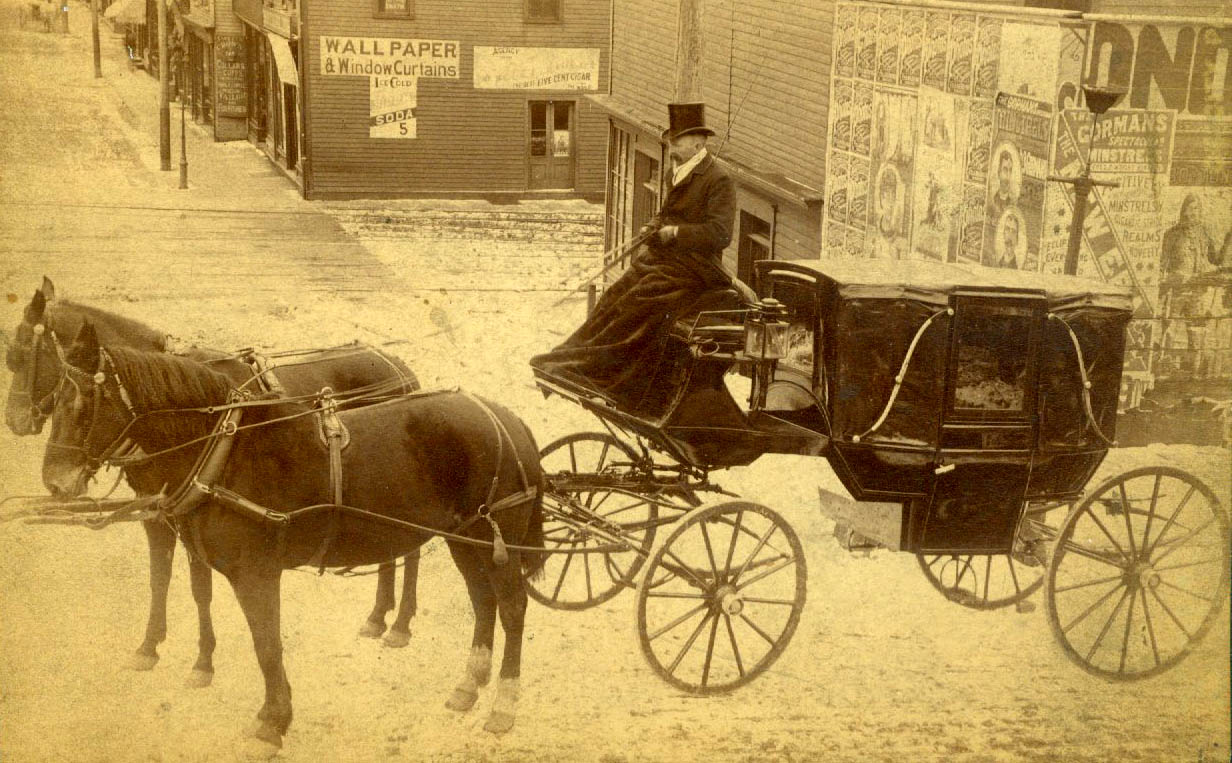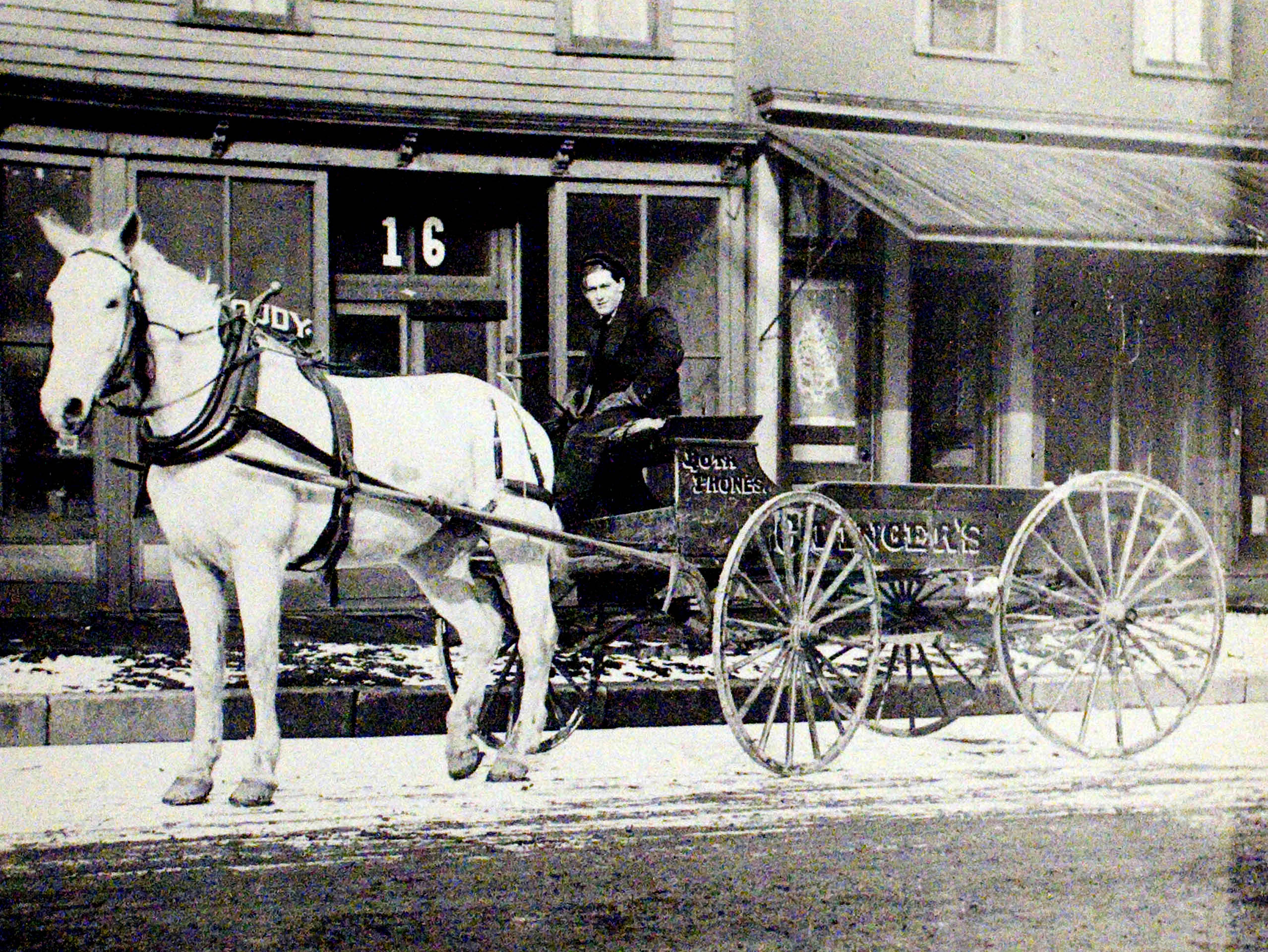Horses
- Judy Etzel
- July 8, 2022
- Hidden Heritage
- 4786
Oil City’s early history featured a favorite four-legged critter – horses.
As the city prospered in a roaring economy fueled by the oil and gas industry, local residents boasted fancy horse-drawn carriages. Liveries and blacksmith shops were nestled into neighborhoods throughout the city.
There was another dimension, too – horse racing. At the close of the 19th Century, Oil City boasted three elaborate race tracks.
The first one, built soon after the City of Oil City was incorporated in 1871, was on Clark’s Summit. Spectators as well as competitors could reach the track via an incline railway that extended from Main Street along the river and up over the hill to the summit.
In news accounts of the races, most of which were of the harness racing type, there were colorful stories associated with the track. One involved a featured race between four Native Americans from Canada competing on foot against a single race horse. The runners competed as a four-man relay and managed to beat the horse on the oval track.
Another tale involved local businessman Wesley Chambers who was riding his horse to the racetrack on Clark’s Summit. Arriving just as a race started, his horse ran onto the track and won the race.
The second race venue included a track as well as a driving park and was located at the head of what would be Cowell Avenue on the city’s South Side. The oval track was about where Bouquin Circle is now. It flourished from about 1880 until 1898 when another race track project got underway across the river.
In 1898, local philanthropist Capt. William Hasson donated 36 acres of land in the Hasson Heights area to the Oil City Fair and Trotting Association. The city swimming pool and ballfields are now located in that area. The track, reported to be the best and fastest oblong half-mile track in the country, opened with much fanfare on June 14, 1898. It featured a judges’ tower, an entertainment platform and a large grandstand. Special guests for opening day were Civil War veterans attending a large Grand Army of the Republic (GAR) encampment meeting in Oil City that week. The Fair and Trotting Association held the Great Oil City Fair for four years at its track property. The fair, which typically lasted three to four days, featured horse racing as well as agriculture and animal exhibits, entertainment and more.
The fairgrounds featured a large tent to accommodate entertainment. In that tent was shown Oil City’s first movie, “The Great Train Robbery,” shortly after its release in 1903.
The fairs were discontinued after four years but horse racing contests were held until 1909. The property went into mortgage foreclosure and the fencing and grandstand were torn down in 1925.
Little Pat
One of the most successful horses on the national harness racing circuit was owned by a Cranberry Township man.
Little Pat, a racing champion, was owned by Homer Biery, a businessman and oil dealer. The Biery homestead was a large farm on Route 322 in the township.
The horse won numerous races, including the Berea Harness Racing’s Walter E. Seely Cup and the 1939 McKelvey Stakes at Canfield, Ohio. Little Pat was reputedly the first “million-dollar harness racehorse” in the U.S.
One note of publicity showed a photograph of Little Pat with Homer Biery, driver Harry Short, and world feather and welterweight boxing champ Henry Armstrong. The newspaper article was headlined “Champ Meets Champ.”
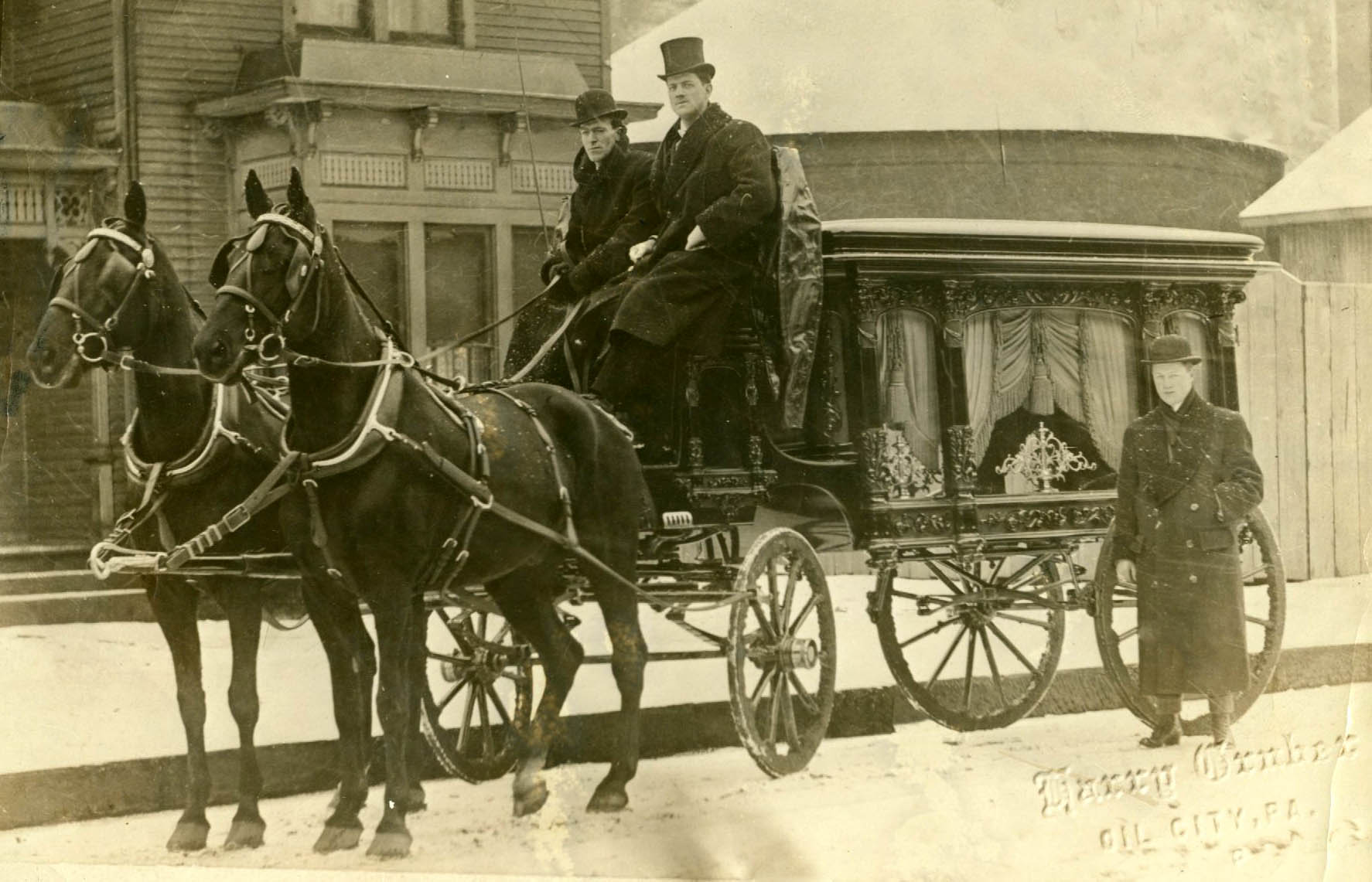
Written by Judy Etzel with research by Kay Dawson and design by Natalie Cubbon.
HIDDEN HERITAGE IS SPONSORED BY:
Oil Region Alliance
Gates & Burns Realty
Support This Project
Donations to the library are appreciated to help offset printing costs & make this project possible! Want to become a sponsor? Email us at promotions@oilregionlibraries.org to get started!
Make a Donation
